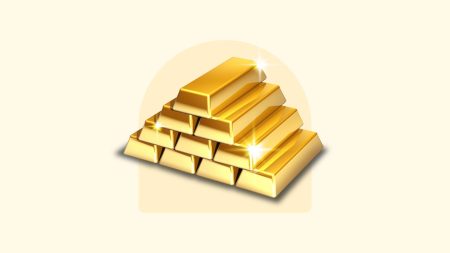Our writers and editors used an in-house natural language generation platform to assist with portions of this article, allowing them to focus on adding information that is uniquely helpful. The article was reviewed, fact-checked and edited by our editorial staff prior to publication.
You may have heard investors refer to a company’s dividend yield when discussing how attractive a stock might be as an investment, but what exactly does that mean?
Here’s what you should know about dividend yields, including how to calculate them.
What are dividends and how do dividend yields work?
Dividends are the slice of a company’s earnings that are distributed to stockholders. These payments, usually paid on a quarterly basis, are a form of reward for shareholders who are the company’s owners. The amount of dividends paid out is decided upon by the company’s board of directors and may require shareholder approval. Dividends can significantly impact an investor’s overall return by providing a steady income stream and potentially boosting the market price of the stock.
However, it’s worth noting that not all companies pay dividends. This is often the case with young or rapidly growing companies that opt to reinvest their profits back into the business.
The dividend yield, a key metric for investors evaluating a stock, is the annual dividend amount expressed as a percentage of the stock’s current share price.
How to calculate dividend yield
The formula for calculating dividend yield is as follows:
Dividend yield = Annual dividends paid per share / price per share
This formula is used to calculate the return on investment for a stock in terms of dividends. For instance, if a company’s stock trades at $100 and it pays an annual dividend of $5 per share, the dividend yield would be 5 percent. This means that for every dollar invested in the company’s stock, you would receive 5 percent back annually in the form of dividends.
To find the annual dividend payout of a company, you can check its annual report, multiply the most recent quarterly dividend by four (if dividends are paid quarterly), or add up the four most recent quarterly dividends. Understanding dividend yield helps investors compare the attractiveness of different stocks and can also be an indicator of a company’s financial health.
It should be noted that dividends are not guaranteed and can change if a company runs into financial issues or decides to use its capital for another purpose, such as an acquisition or to pay down debt.
Dividend yield vs. dividend payout ratio
While the dividend yield and dividend payout ratio are both important metrics for evaluating a company as a potential investment, they measure different things.
The dividend yield shows the return an investor gets from the dividends paid by a company compared to the current stock price. A higher dividend yield indicates a potentially higher return, but it could also signal risk if the yield is unusually high compared to peers, possibly indicating financial distress or an impending dividend cut.
On the other hand, the dividend payout ratio measures the amount of a company’s earnings that are paid out to shareholders as dividends. A lower payout ratio is generally seen as more sustainable, indicating the company retains enough earnings to reinvest in its operations or prepare for future downturns. Conversely, a high ratio could suggest limited growth opportunities and potential difficulty in maintaining dividends if earnings decline.
By analyzing both metrics, investors can assess not only the immediate income potential of a stock but also its long-term dividend sustainability and overall financial health.
Is a high dividend yield important for investors?
A high dividend yield can offer several benefits to investors, including a steady stream of income, which can be particularly attractive for income-focused investors or those in retirement. High-dividend stocks can also offer the benefit of compounding returns if dividends are reinvested.
However, there are potential risks associated with high-dividend stocks. For instance, a high dividend yield could indicate that a company’s stock price has significantly declined, which could be a sign of underlying financial troubles. Furthermore, there is a risk that the high dividend may not be sustainable, and the company might be forced to cut or eliminate its dividend in the future. Rising interest rates can also make high-dividend stocks less attractive compared to risk-free government securities.
Therefore, while high dividend yields can be attractive, investors also need to carefully assess a company’s financial health, including its free cash flow and historical dividend payout ratio, before investing in high-dividend stocks.
Do you pay taxes on dividends?
Yes, dividends are generally subject to taxes. However, the tax treatment of dividends can vary depending on a variety of factors, including the type of account in which the dividend-paying stocks are held and the investor’s personal tax situation.
Various tax strategies can be employed to minimize the tax burden on dividend income, such as holding dividend-paying stocks in tax-efficient investments like index funds and ETFs, placing tax-efficient investments in taxable accounts and investments with a heavier tax burden in tax-advantaged accounts like IRAs and 401(k)s, and utilizing tax-loss harvesting to offset capital gains with capital losses.
In general, dividends received from foreign investments might be subject to double taxation — once in the foreign country and again in the U.S. However, the U.S. offers a Foreign Tax Credit to mitigate this double taxation, allowing taxpayers to offset the foreign taxes paid against their U.S. tax liability.
Bottom line
Understanding dividends and dividend yield is crucial for investors when evaluating stocks. It provides insight into a company’s financial health and potential for long-term growth. While a high dividend yield may be attractive for income-focused investors, it’s important to carefully assess a company’s financial stability and the sustainability of its dividend before investing.
Read the full article here










